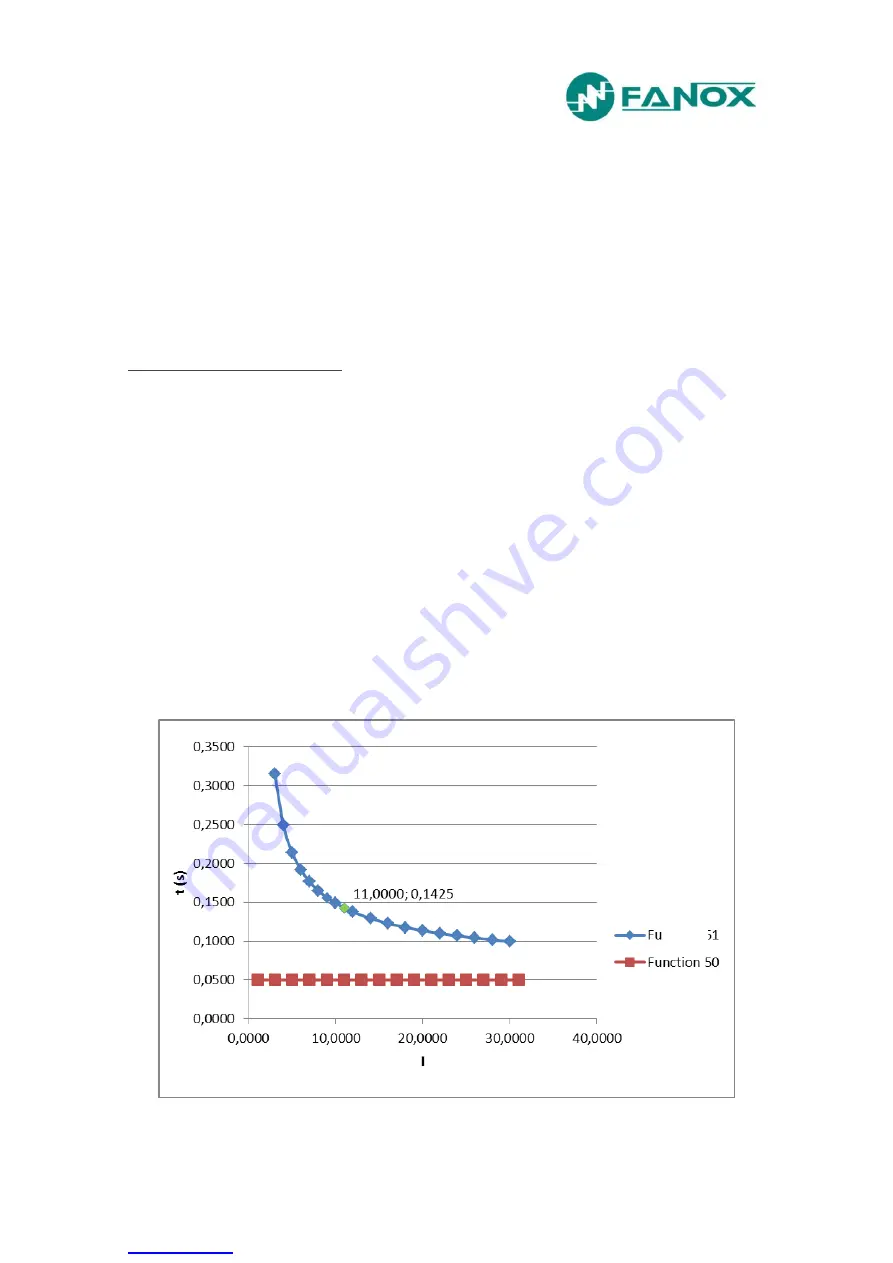
Rev.06
57/226
4.17. Application examples
It is important to know that if both overcurrent protection functions (50 and 50/51), phase or
neutral, are enable, definite time function (function 50) must be more restrictive. So, if
overcurrent fault values are low, inverse time overcurrent function (function 50/51) must work,
and if overcurrent fault reaches a certain value, definite time overcurrent function will always
work. This is because, when overcurrent fault reach high values (I>>), it is necessary to be sure
that trip is going to be instantaneous to get that the element we are protecting, does not be
damaged.
It is shown somo examples below:
APPLICATION EXAMPLE 1
Starting from the following information:
Line details:
•
Transformation ratio of CT =100/1
•
Primary current: I
p
=100 A
50/51 function settings
•
Curve type: IEC Inverse
•
Dial: 0.05
•
Tap: 1xI
n
50 function settings
•
Tap: 11xI
n
•
Time delay: 0.05 s
Figure 1. 50 y 50/51 IEC Inverse
Summary of Contents for SIL-D00
Page 8: ...www fanox com Rev 06 8 226 2 DIMENSIONS AND CONNECTION DIAGRAMS 2 1 Equipment front view...
Page 9: ...www fanox com Rev 06 9 226 2 2 Equipment dimensions...
Page 10: ...www fanox com Rev 06 10 226 2 3 Cut out pattern...
Page 12: ...www fanox com Rev 06 12 226 Digital connections Only as an example...
Page 13: ...www fanox com Rev 06 13 226 2 5 Terminals...
Page 49: ...www fanox com Rev 06 49 226...
Page 50: ...www fanox com Rev 06 50 226...
Page 51: ...www fanox com Rev 06 51 226...
Page 52: ...www fanox com Rev 06 52 226...
Page 200: ...www fanox com Rev 06 200 226...
Page 225: ...www fanox com Rev 06 225 226 NOTES...
Page 226: ...www fanox com Rev 06 226 226...










































